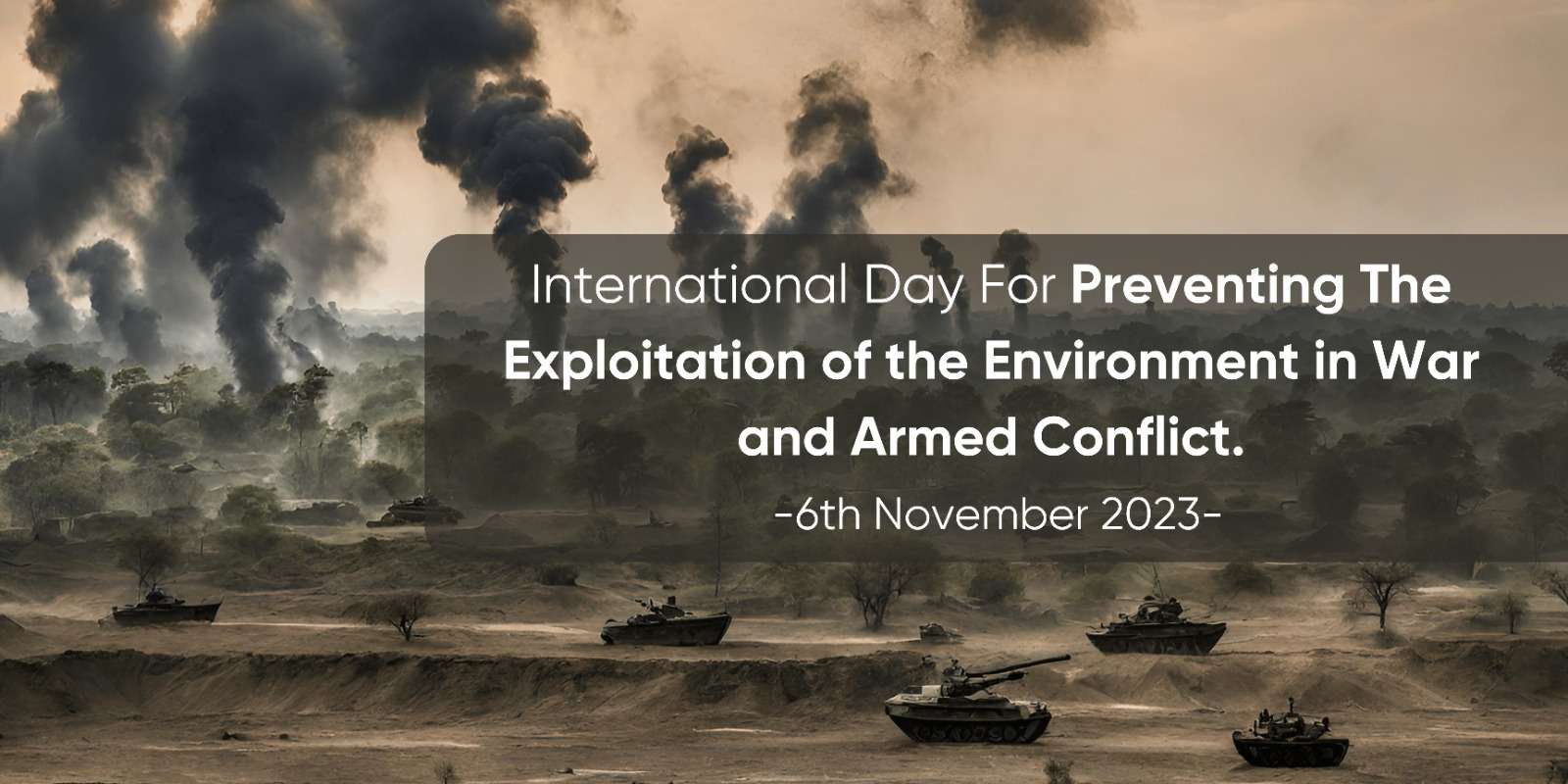International Day For Preventing The Exploitation of the Environment in War and Armed Conflict

The International Day for Preventing the Exploitation of the Environment in War and Armed Conflict, observed on November 6th each year, serves as a solemn reminder of the devastating impacts of warfare on our planet’s delicate ecosystems. Initiated by the United Nations, this day seeks to shed light on the critical importance of protecting the environment during times of conflict and promoting global efforts to prevent environmental exploitation amid war-torn regions.
History and Importance
The history of this significant day traces back to the aftermath of the Gulf War in 1991 when the United Nations recognized the urgent need to address the environmental consequences of armed conflicts. The day was officially established in 2001, emphasizing the international community’s commitment to mitigating environmental degradation in conflict zones. Its significance lies in the recognition that the environment is often a silent victim of warfare, suffering from pollution, deforestation, and resource depletion, exacerbating the challenges faced by communities striving to rebuild amidst conflict aftermath.
Theme and Significance
Each year, the International Day for Preventing the Exploitation of the Environment in War and Armed Conflict focuses on a specific theme to spotlight various environmental issues related to conflict zones. The chosen themes are aimed at raising awareness and encouraging global cooperation to protect and preserve the environment during and after conflicts.
Understanding the Impact
The devastating impact of war on the environment cannot be understated. From the destruction of forests and wildlife habitats to the contamination of water sources and the release of toxic chemicals, armed conflicts leave scars on the natural world that persist long after the fighting has ceased. This disruption often hinders the recovery and sustainable development of affected communities, perpetuating a cycle of poverty and instability.
Environmental Protection in Conflict Zones
Implementing comprehensive environmental protection measures in conflict zones is a critical step in mitigating further harm to ecosystems. Upholding international laws and conventions, such as the Geneva Conventions and the Convention on the Prohibition of Military or Any Other Hostile Use of Environmental Modification Techniques, is essential in safeguarding natural resources and minimizing environmental exploitation during warfare.
Addressing the Challenges
Challenges in protecting the environment during conflict are numerous and complex. These include inadequate enforcement of existing international laws, lack of accountability for environmental destruction, limited resources for post-conflict environmental rehabilitation, and the proliferation of illicit resource extraction. Overcoming these challenges demands concerted efforts from the international community, governments, and non-governmental organizations to enforce stringent regulations and provide essential aid for sustainable recovery.
The Way Forward
To ensure a sustainable future for conflict-affected regions, a collaborative approach is essential. This entails integrating environmental considerations into peacebuilding and post-conflict reconstruction efforts, promoting sustainable practices, and fostering environmental awareness among stakeholders. Investing in green technologies, renewable energy, and eco-friendly infrastructure can pave the way for long-term environmental conservation and socioeconomic development.
Conclusion
The International Day for Preventing the Exploitation of the Environment in War and Armed Conflict serves as a poignant reminder of the intertwined relationship between environmental protection and global peace. Recognizing the critical role of environmental conservation in conflict prevention and resolution is paramount to fostering a more sustainable and secure world for present and future generations.
Key Points for UPSC Aspirants
- Understand the history and significance of the International Day for Preventing the Exploitation of the Environment in War and Armed Conflict.
- Recognize the detrimental impacts of warfare on the environment, including deforestation, pollution, and resource depletion.
- Comprehend the importance of implementing and enforcing international laws and conventions for environmental protection during conflicts.
- Analyze the challenges associated with safeguarding the environment in conflict zones and the strategies to address them.
- Emphasize the need for collaborative efforts to integrate environmental considerations into post-conflict reconstruction and sustainable development initiatives.
Tags:
Best teachers in every subject.
Let’s get started
We can teach you anything
